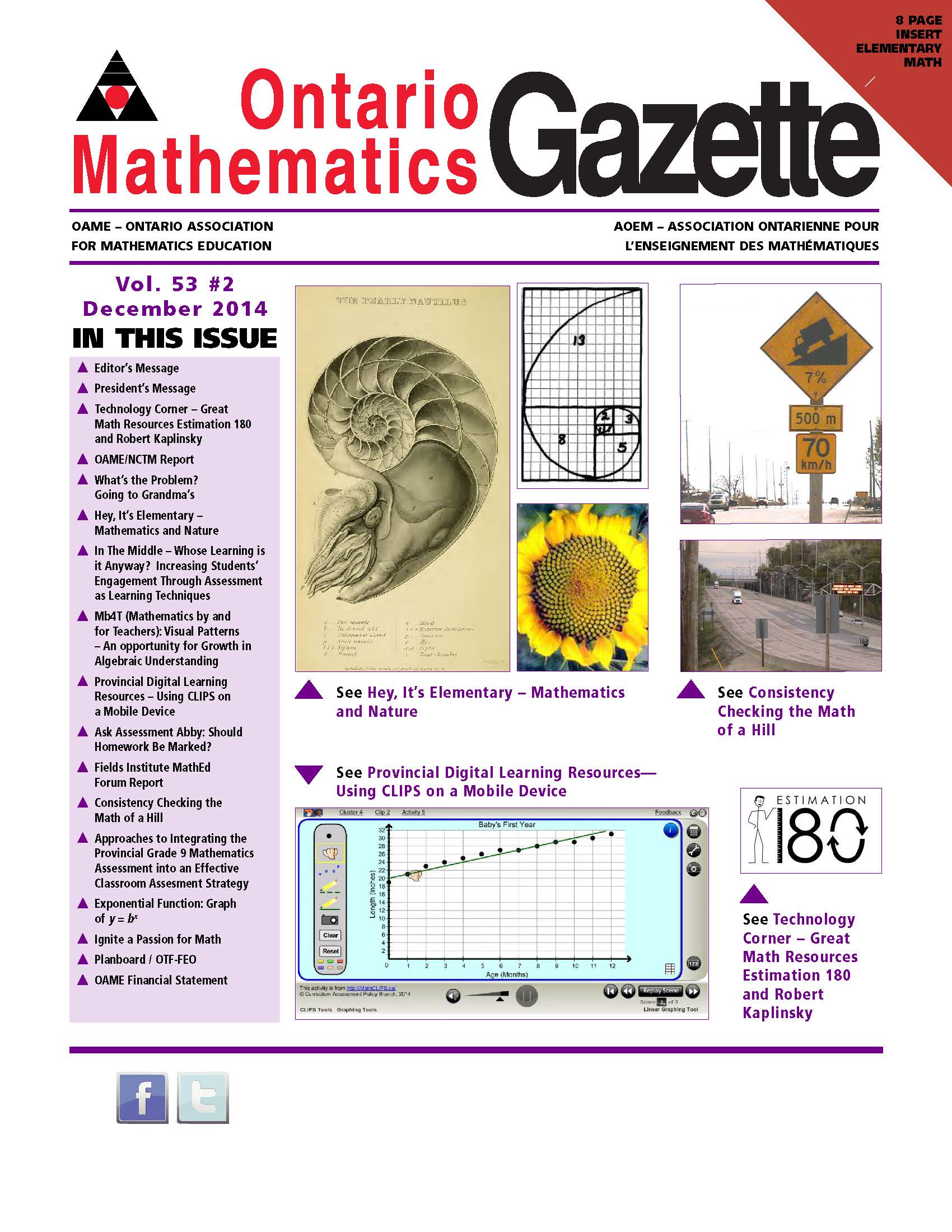 OAME Gazette Volume 53 Number 2 released and includes includes three articles and ten regular columns, dealing with a rich variety of contemporary issues in mathematics education and research.
OAME Gazette Volume 53 Number 2 released and includes includes three articles and ten regular columns, dealing with a rich variety of contemporary issues in mathematics education and research.
In Consistency Checking the Math of a Hill, Tim Sibbald challenges teachers and students to carefully observe, test/measure with various methods, and discuss mathematical phenomena occurring and/or described within the urban environment. Pack your required gear (bike, level, camera, inclinometer, mobile Google Maps access), as you scale a local slope on the Trans-Canada highway!
Co-authors Meth Devendra and Yixuan Xu explore the Exponential Function and the graph of its logarithmic inverse, particularly with base numbers greater than 1, and how this affects graphic display.
Researcher Martha Koch, in her article entitled, Approaches to Integrating the Provincial Grade 9 Mathematics Assessment into an Effective Classroom Assessment Strategy, shares her findings from a qualitative study involving 19 Grade 9 Mathematics teachers who share insights regarding if/how/why they have incorporated EQAO achievement results within their overall student assessment practices.
Regular columns include the following highlights: OAME President, Paul Alves (President’s Message) reminds us of the importance of learning skills as part of formalized classroom assessment; Todd Romiens (OAME/NCTM Report) discusses the American Common Core State Standards (CCSS) document, magic squares, and the game of SKUNK; Stewart Craven (Fields Institute Report) updates members on the September/October meetings of the MathEd Forum; Mary Bourassa (Technology Corner) introduces two fascinating websites (Estimation 180, and Robert Kaplinsky); Shawn Godin (What’s the Problem?) elaborates on a journey to Grandma’s house; Lynda Colgan (Hey, It’s Elementary) takes us on a golden tour of mathematics and nature; Mirela Ciobanu (In the Middle) looks at ‘assessment as learning’ techniques, including connections to the Ontario Numeracy Assessment Package (ONAP); Ann Kajander (MB4T) explores visual patterns with students; Agnes Grafton, Ross Isenegger, Greg Clarke, and Markus Wolski (Provincial Digital Learning Resources) highlight the use of CLIPS on mobile devices; and, Assessment Abby (eponymous) answers a submitted question regarding the marking (or not) of student homework.
As usual, this issue also features the Abacus insert co-edited by Mary Lou Kestell and Kathy Kubota-Zarivnij, and focusing on elementary math teaching resources.


